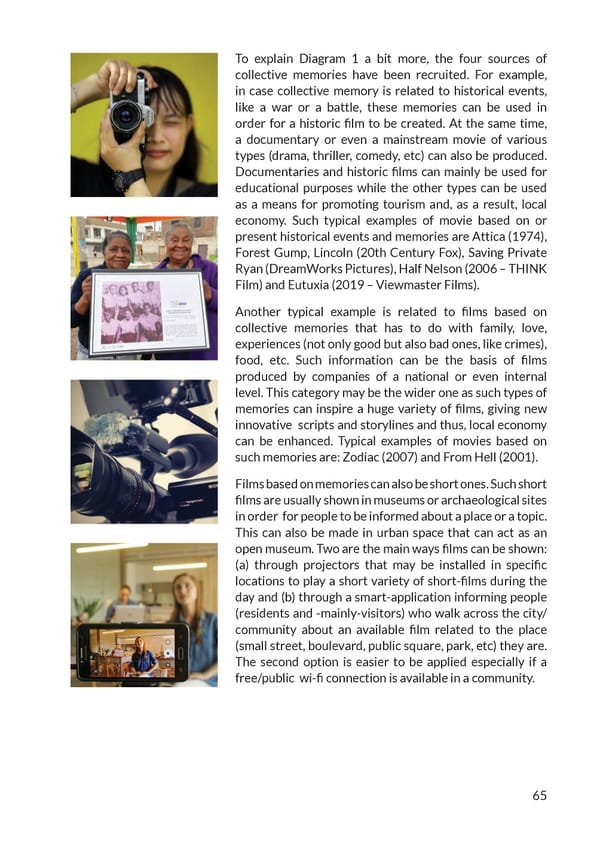To explain Diagram 1 a bit more, the four sources of collective memories have been recruited. For example, in case collective memory is related to historical events, like a war or a battle, these memories can be used in order for a historic film to be created. At the same time, Photography/Film a documentary or even a mainstream movie of various types (drama, thriller, comedy, etc) can also be produced. Documentaries and historic films can mainly be used for educational purposes while the other types can be used as a means for promoting tourism and, as a result, local economy. Such typical examples of movie based on or present historical events and memories are Attica (1974), Forest Gump, Lincoln (20th Century Fox), Saving Private Ryan (DreamWorks Pictures), Half Nelson (2006 – THINK Film) and Eutuxia (2019 – Viewmaster Films). Another typical example is related to films based on collective memories that has to do with family, love, experiences (not only good but also bad ones, like crimes), food, etc. Such information can be the basis of films produced by companies of a national or even internal level. This category may be the wider one as such types of memories can inspire a huge variety of films, giving new innovative scripts and storylines and thus, local economy can be enhanced. Typical examples of movies based on such memories are: Zodiac (2007) and From Hell (2001). Films based on memories can also be short ones. Such short films are usually shown in museums or archaeological sites in order for people to be informed about a place or a topic. This can also be made in urban space that can act as an open museum. Two are the main ways films can be shown: (a) through projectors that may be installed in specific locations to play a short variety of short-films during the day and (b) through a smart-application informing people (residents and -mainly-visitors) who walk across the city/ community about an available film related to the place (small street, boulevard, public square, park, etc) they are. The second option is easier to be applied especially if a free/public wi-fi connection is available in a community. 65
 MemoryHandbook new Page 64 Page 66
MemoryHandbook new Page 64 Page 66